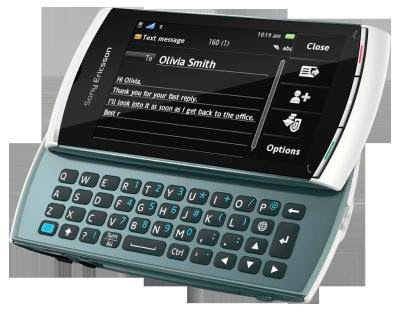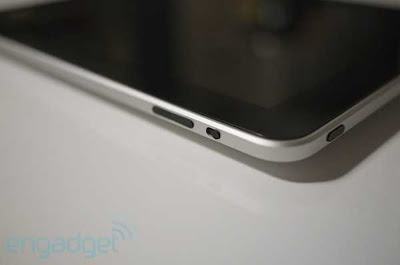Samsung Galaxy Spica .Samsung Electronics Co., Ltd., a leading mobile phone provider, today announced it has upgraded its powerful Galaxy Spica (I5700) smartphone to harness the power of the latest version of AndroidTM, Android 2.1. The smartphone now offers users a galaxy of new features and an unrivalled mobile experience.
The Galaxy Spica retains all the features inherent in the successful Galaxy Spica (I5700), such as seamless connectivity and access to GoogleTM mobile services, multimedia functionality and speedy processor performance
"Lovers of the Galaxy Spica appreciated the ease with which they could access their contacts and personalise their experience – our upgraded handset offers all this and much more; a rich and rewarding and powerful mobile experience," said JK Shin, President and Head of the Mobile Communications Business, Samsung Electronics.
The upgrade will be available via PC Studio 7, Samsung's unique in-house software upgrade program. PC Studio 7 was included in the package of Galaxy Spica or can be downloaded at the Samsung mobile website (http://www.samsungmobile.com).
Enhanced User Experienced
The Galaxy Spica becomes a highly intuitive communications device offering users the option to personalise no less than nine side-scrolling screens. Users can really let their imaginations run wild, creating different home screens according to different personal interests or requirements.
The handset now features augmented reality technology that displays real-time digital information of your surroundings over the view-finder of the Galaxy Spica's 3 megapixel camera. The Galaxy Spica also features Samsung widgets, Visual bookmark and PC Sync support to enable users to synchronise their devices quickly.
Enhanced Multimedia and Messaging Functionality
The handset now comes with a number of enhanced multimedia features which transform the Galaxy Spica into a personal entertainment device. Media browser allows you to browse through your media collection with ease. The camera has been upgraded to offer enhanced picture options and viewing functionality.
Improved messaging functionality means that it is much easier to attach files to MMS and email that users can easily add contacts to messages direct from the phonebook. Improved contact management enables users to find a necessary contact very easily through the alphabetical index.
The upgrade will be available from March 2010 in Germany and gradually rolled out to other European markets, Southeast Asia, the Middle East and Asia, Africa and rest of the world.


Specification
* General 2G Network GSM 850 / 900 / 1800 / 1900
* 3G Network HSDPA 900 / 2100
* Announced 2009, September
* Released 2009, November
* Size Dimensions 115 x 57 x 13.2 mm
* Weight 124 g
* Display Type TFT capacitive touchscreen, 65K colors, size 320 x 480 pixels, 3.2 inches
* Accelerometer sensor for UI auto-rotate
* Sound Alert types Vibration; MP3, WAV ringtones
* Speakerphone Yes
* 3.5 mm audio jack
* DNSe (Digital Natural Sound Engine)
* Internal memory 180 MB storage
* Card slot microSD (TransFlash) up to 32GB
* DATA GPRS Class 12
* EDGE Class 12
* 3G HSDPA, 3.6 Mbps
* WLAN Wi-Fi 802.11 b/g
* Bluetooth Yes v2.1 with A2DP
* Infrared port No
* USB Yes, microUSB v2.0
* Camera Primary 3.15 MP, 2048x1536 pixels, autofocus
* Features Geo-tagging
* Video Yes
* Secondary No
* Features OS Android OS, v1.5 (Cupcake)
* CPU 800MHz processor
* Messaging SMS(threaded view), MMS, Email, IM
* Browser HTML
* Radio No
* Games Yes
* Colors Black, White
* GPS Yes, with A-GPS support
* Java Via third party application
* Digital compass
* MP4/H.263/H.264/WMV/DivX player
* MP3/eAAC+/WMA player
* Google Search, Maps, Gmail,
* YouTube, Calendar, Google Talk integration
* Organizer
* Voice memo
* Battery Standard battery, Li-Ion 1500 mAh
* Stand-by Up to 650 h (2G) / Up to 580 h (3G)
* Talk time Up to 11 h 30 min (2G) / Up to 6 h 50 min (3G)
* Misc SAR US 0.55 W/kg (head), 0.61 W/kg (body), SAR EU 0.59 W/kg (head)
Strength
* 3G HSDPA
* Android OS, 800MHz processor
* TFT display, touchscreen, 3.2 inches
* 3.15 MP, autofocus
* WiFi
* GPS
* 180 MB internal memory
Weakness
No QWERTY keyboard
* No secondary camera
* No camera flash
* No radio



















